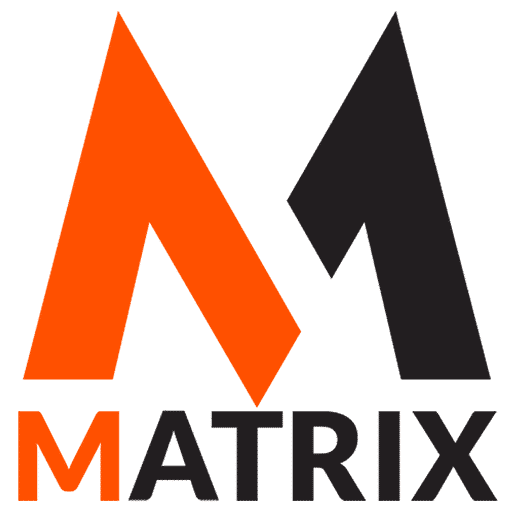Stop Chasing Keywords, Start Capturing Intent
Learn How to Stop Chasing Keywords, Start Capturing Intent for More Sales
Marketing managers live and die by the numbers. Yet, when it comes to search marketing, the numbers often tell a misleading story. You see traffic climbing, keyword rankings improving, and click-through rates holding steady.
On the surface, everything looks green. However, beneath these metrics, a nagging question persists: Are our SEO and paid search efforts truly attracting the right audience with strong purchase intent, or are we merely driving traffic that lacks genuine value?
This is the central anxiety of modern search marketing.

Traditional metrics, such as impressions, clicks, or even keyword rankings, don’t reveal whether the traffic aligns with actual business goals, including qualified leads, conversions, or long-term customer value. You might be winning the battle for visibility, but losing the war for revenue.
Imagine you’re a commercial fishing operation. Your goal isn’t just to cast the widest net possible; it’s to bring in a specific, high-value catch—let’s say, Bluefin tuna.
The “old way” of measuring success would be to count how many fish of any kind are in your net. You could report record-breaking numbers of mackerel, sardines, and sea bass. Your nets are full, your activity is high, but you’ve completely missed your target. You’re busy, but you’re not profitable.
This is precisely the trap many marketing teams fall into with search. They chase high-volume keywords (the mackerel and sardines) instead of focusing on the specific, nuanced queries that signal a user is ready to buy (the Bluefin tuna).
This guide provides a new framework for measurement. It’s a way to re-rig your nets and recalibrate your sonar to focus exclusively on capturing intent.
We will move beyond surface-level data to explore three powerful metrics that, together, create a holistic picture of search performance: high-level visibility (Share of Voice for Intent Clusters), engagement quality (Non-Branded CTR), and tangible business value (Lead Quality Score from Organic Traffic).
By the end, you won’t just know if your search strategy is busy; you’ll know if it’s profitable.
1. Metric #1: Share of Voice (SOV) for Intent Clusters – Owning the Entire Fishing Ground

What It Is:
For decades, marketers have been obsessed with tracking their rank for a handful of prized keywords. However, this is akin to judging the health of our fishing operation by observing a single spot in the ocean.
Modern buyers don’t use just one query; they explore a whole topic. They ask questions, compare solutions, and learn before making a purchase. This collection of related queries forms an “intent cluster.”
Share of Voice (SOV) for Intent Clusters measures your brand’s visibility across an entire topic or problem space, not just a single keyword, with AIReportPad.
It answers the strategic question: “How much of the conversation around this customer problem do we own?” It shifts the focus from “Do we rank #1 for ‘sales CRM’?” to “How visible are we for the entire ‘AI-powered sales automation’ ecosystem of keywords?”
Is Your Marketing Stack Leaving Money on the Table?
Your disconnected tools see pieces of the puzzle. A unified AI platform sees the whole picture. Enter your metrics to quantify the impact of switching to MatrixLabX.
Your Current Metrics
Core Business Inputs
1. Searching
2. Streaming
3. Scrolling
4. Shopping
Your Performance Transformed
| Metric | Your Platform | MatrixLabX | Monthly Lift |
|---|
Total Estimated Annual Gain
$0
from improved conversions and recovered revenue
Why It Matters for Capturing Intent:
Owning an intent cluster is about more than just traffic; it’s about authority.
When a potential customer repeatedly sees your brand answering their questions—from high-level informational queries to specific, bottom-of-funnel commercial searches—you cease to be just another vendor.
You become the definitive resource, the trusted expert.
- Steering the Conversation: It demonstrates how effectively you are guiding a potential customer through their entire buying journey, building trust at every step.
- Establishing Authority: High SOV positions your brand as the market leader and go-to resource, creating a powerful competitive moat. Your brand becomes synonymous with the solution.
- Aligning with Modern Search Behavior: It acknowledges that users search in complex, non-linear ways. Measuring by cluster aligns your strategy with how your audience behaves.
Returning to our fishing analogy, SOV is not about having one line in the water; it’s about having the most prominent and respected fleet in the entire Bluefin tuna fishing ground. When other captains think of this territory, they think of you.
How to Measure and Capturing Intent:
Calculating SOV for intent clusters is a multi-step process that requires a modern SEO platform (like AISEOPad and AIReportPad).
- Define Your Clusters: First, brainstorm the core problems your product solves. For a company selling sales automation software, clusters might be “AI-powered sales automation,” “lead nurturing workflows,” or “improving sales team productivity.”
- Build Your Keyword Basket: Within each cluster, compile a comprehensive list of keywords. This should include informational queries (“how to automate sales follow-ups”), navigational queries (“best sales automation platforms”), and commercial queries (“sales automation software pricing”). A good basket may contain 50-500 keywords.
- Track Your Visibility: Use your SEO tool to track your rankings for every keyword in the basket. The tool will then calculate your overall “visibility score.” This is typically a weighted metric that assigns more importance to keywords with higher search volume and higher ranking positions.
- Benchmark Against Competitors: The true power of SOV comes from competitive analysis. Run the same report for your top 3-5 competitors using the same keyword basket. Your Share of Voice is your visibility score as a percentage of the total visibility across all tracked competitors.
Putting It Into Practice (KPI Example):
A vague goal like “improve SEO” is useless. A powerful, intent-driven KPI sounds like this:
- KPI: In Q3, we will increase our SOV for the “AI-powered sales automation” topic cluster from 15% to 25%, surpassing our main competitor, SalesCorp.
This KPI is specific, measurable, and directly tied to the strategic goal of market leadership.
2. Metric #2: Non-Branded Click-Through Rate (CTR) – The Lure That Gets Bitten

What It Is:
If SOV is about owning the fishing ground, Non-Branded Click-Through Rate (CTR) is about having the most effective lure. It measures the percentage of impressions that result in a click for keywords that do not include your brand name.
Any brand can get a high CTR for its name. That’s a given. The real test is whether you can win the click when you are just one of ten blue links on the page, stripped of your brand equity. This is where the power of your message—conveyed through your page title and meta description—is put to the ultimate test.
Why It Matters for Capturing Intent:
Non-branded CTR is the purest signal that you have successfully matched your message to the user’s intent at the precise moment of their search. A high CTR means your “lure” is perfectly designed for the fish you’re trying to catch.
- The Ultimate Resonance Test: It’s a direct measure of your ability to write compelling, benefit-oriented copy that speaks directly to a searcher’s needs, compelling them to choose you over nine other options.
- Winning the “Battle for the Click”: On a crowded search results page, the snippet is your only sales pitch. A high CTR indicates that your pitch is effective and that you understand the psychology of your target audience.
- A Positive Feedback Loop: Google pays attention. A higher-than-average CTR signals to search engines that your result is highly relevant, which can, in turn, lead to improved rankings over time.
This metric is crucial because it distinguishes between brand-driven clicks and merit-driven clicks. You’re not just getting traffic from people who already know you; you’re actively converting curious searchers into website visitors based on the strength of your value proposition alone.
How to Measure It:
Measuring Non-Branded CTR is straightforward and can be done for free using Google Search Console (GSC).
- Navigate to Performance Report: Open GSC and go to the “Performance” section.
- Filter by Query: Click “+ New” next to the filter options and select “Query…”
- Exclude Your Brand: From the dropdown, choose “Doesn’t contain” and enter your brand name. If you have common variations or abbreviations, add those as well (e.g., “Sales Force,” “Salesforce.com,” “SFDC”).
- Analyze the Results: GSC will now show you the total clicks, impressions, and average CTR for all non-branded queries. This is your baseline.
- Segment for Deeper Insights: Don’t stop at the aggregate number. Use GSC’s filters to segment by:
- Pages: Which pages have the highest and lowest CTR? This can reveal high-performing content and under-optimized snippets.
- Queries: Filter for queries containing commercial-intent modifiers like “pricing,” “software,” “tool,” or “alternative” to see how well you’re capturing bottom-of-funnel traffic.
- Device: Is your CTR significantly different on mobile vs. desktop? This could indicate an issue with how your snippets render on smaller screens.
Putting It Into Practice (KPI Example):
A weak goal is “get more clicks.” An intent-focused goal is precise and challenging.
- KPI: Achieve an average non-branded CTR of over 4% on the first page of search results for all commercial-intent keywords.
This KPI forces the team to relentlessly optimize their page titles and meta descriptions to be as compelling and relevant as possible.
3. Metric #3: Lead Quality Score from Organic Traffic – Measuring the Value of Your Catch

What It Is:
We’ve established our presence in the right fishing ground (SOV) and confirmed our lure is effective (Non-Branded CTR). Now for the most important question: Are we catching Bluefin tuna or just filling the net with bycatch?
The Lead Quality Score from Organic Traffic extends beyond conversion volume to evaluate the value of the leads generated from your search efforts.
It attaches a score to each lead based on how closely they match your Ideal Customer Profile (ICP), finally connecting SEO to revenue. It answers the ultimate question: “Is our search traffic attracting high-potential prospects who are likely to become valuable customers?”
Why It Matters for Capturing Intent:
This is the metric that gets your CFO to care about SEO. It’s the definitive proof that your content and keyword strategy are not just generating traffic, but generating pipeline.
- The Bridge to Revenue: It provides the crucial, undeniable link between your top-of-funnel search strategy and your bottom-line business objectives.
- Separating Signal from Noise: Not All Conversions Are Created Equal. A “demo request” from a student is fundamentally different from a request from a VP at a Fortune 500 company. This metric helps you focus on attracting the latter.
- Fostering Sales & Marketing Alignment: To implement this, marketing (content and SEO) and sales (who define a “good lead”) must agree on the scoring criteria. This process forces a deep, strategic alignment that benefits the entire organization.
Without this metric, a marketing team might celebrate a 200% increase in form fills, only to have the sales team complain that all the leads are of poor quality.
Lead Quality Score ensures that both teams are working toward the same goal: attracting and converting high-value customers.
How to Measure It:
This is the most technically demanding of the three metrics, as it requires integration between your digital platforms.
- Define Your Lead Scoring Model: Work with your sales team to create a point-based system. Attributes can be explicit (data the user provides) and implicit (behavioral data).
- Explicit Data (Firmographics/Demographics): Job Title (e.g., VP = +20, Manager = +10, Intern = 5), Company Size (e.g., >500 employees = +15), Industry.
- Implicit Data (Behavior): Visited the pricing page (+10), Downloaded a case study (+15), Watched a product webinar (+20).
- Integrate Your Systems: This is the key. You need your website analytics, marketing automation platform (such as HubSpot, Marketo, or Pardot), and CRM (like Salesforce) to communicate with each other. The data flow should look like this:
- A user arrives on your site from organic search (tracked in Google Analytics).
- They fill out a form, and their data is entered into your marketing automation platform.
- The platform automatically applies the scoring model.
- The lead, along with their score and source (organic search), is passed to the CRM.
- Analyze and Report: In your CRM or marketing automation platform, create a report that filters for all leads where the source was “Organic Search.” Then, calculate the average Lead Quality Score for these leads over a specific period (e.g., monthly or quarterly).
Putting It Into Practice (KPI Example):
Don’t just aim for “more leads.” Aim for better leads.
- KPI: Maintain an average Lead Quality Score of 80+ for all Marketing Qualified Leads (MQLs) generated via organic search throughout the fiscal year.
This KPI holds the marketing team accountable for delivering prospects that the sales team is excited to engage with.
Bringing Capturing Intent All Together: Your Intent-Capture Dashboard

Individually, these metrics are powerful. Together, they form a clear, compelling narrative about your search performance.
They should be tracked together on a simple dashboard that tells a story from top to bottom:
- Share of Voice (SOV): Are we establishing our authority in the market?
- Non-Branded CTR: Is our message resonating and engaging the right people?
- Lead Quality Score: Is Our Engagement Driving Tangible Business Value?
When you present this dashboard, you can construct a powerful narrative: “This quarter, we grew our Share of Voice in our target cluster by 10 points.
This increased visibility, combined with A/B testing our snippets, drove our non-branded CTR up from 3.5% to 4.2%.
Most importantly, this influx of highly-relevant traffic resulted in our average Lead Quality Score from search rising from 75 to 83, delivering a 15% increase in sales-accepted leads to the pipeline.”
That is a story that commands respect in the boardroom. It’s a story of intentional, profitable growth, not just digital noise.
Conclusion: Measure What You Want to Move
The days of celebrating traffic for traffic’s sake are over. In a world of empowered buyers and fierce competition, the only sustainable advantage is a deep, strategic focus on user intent.
The challenge for marketing managers is that you can’t manage what you don’t measure. As long as your reporting is centered on vanity metrics, your strategy will be, too.
By shifting your focus to Share of Voice for Intent Clusters, Non-Branded CTR, and Lead Quality Score, you change the entire game. You move from being a wide-net fisherman, hoping for a lucky catch, to a strategic Bluefin tuna operation.
You know your fishing grounds, you’ve perfected your lure, and you’re measuring the actual value of your haul.
The transition requires effort. It demands a new way of thinking, better collaboration with sales, and a commitment to leveraging your tech stack more effectively.
But the payoff is immense. It’s the difference between guessing whether your search budget is effective and knowing it is.
Start by implementing just one of these metrics in your next quarterly plan. Begin the conversation, build the report, and start measuring what you truly want to move: capturing high-value customer intent.
Frequently Asked Questions for Marketing Managers
- Q: How can I convince my leadership team to shift from traditional keyword-focused reporting to these new intent-based metrics?
A: Focus on tying these new metrics directly to business outcomes like qualified leads, conversions, and revenue. Use the “fishing analogy” from the guide to explain how traditional metrics can be misleading, and demonstrate how Share of Voice, Non-Branded CTR, and Lead Quality Score provide a clearer picture of profitability and strategic growth, which resonates with executives. - Q: What if I don’t have all the sophisticated tools (like Semrush, Ahrefs, or Salesforce integration) mentioned in the guide? Can I still implement these strategies?
A: While advanced tools streamline the process, you can start small. Google Search Console is free and essential for measuring Non-Branded CTR. For SOV, you can manually track a smaller, high-value keyword basket across competitors, though it’s more labor-intensive. Lead Quality Scoring can begin with a simpler, manual scoring system and CRM tags before full automation. The key is to start measuring something related to intent. - Q: How often should I track and report on these new metrics?
A: The frequency depends on your business cycle and the pace of change in your market. For strategic metrics, such as Share of Voice for Intent Clusters and average Lead Quality Score, quarterly reporting is often sufficient to show trends and progress. Non-branded CTR can be monitored more frequently (e.g., monthly) to identify opportunities for quick optimization of page titles and meta descriptions. - Q: What’s the biggest challenge I should anticipate when trying to implement a Lead Quality Score system, and how can I overcome it?
A: The biggest challenge is often aligning sales and marketing on what constitutes a “high-quality lead” and agreeing on the scoring criteria. Overcome this by fostering open communication and collaborative workshops where both teams define the Ideal Customer Profile (ICP) and the explicit and implicit behaviors that indicate strong intent and value. Begin with a simple scoring model and refine it as you gather more data and feedback. - Q: My current SEO efforts are heavily focused on driving high traffic volume. How can I transition my team’s mindset and strategy to prioritize intent capture without completely abandoning traffic goals?
A: Frame the shift as a move from “busy” to “profitable” traffic. Explain that while volume is good, relevant volume is better. Introduce a phased approach, perhaps by dedicating a portion of your team’s effort to optimizing for specific intent clusters and monitoring their associated SOV and Lead Quality. Demonstrate how even a smaller volume of highly qualified traffic can yield a greater ROI, proving the value of the new approach.

